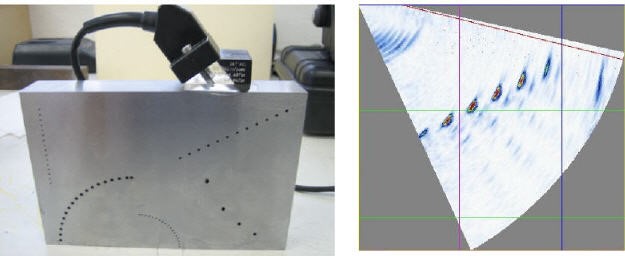Phased Array Weld Inspection
Phased Array or PAUT is one of the most advanced form of UT that offers a much higher degree of capabilities over conventional UT. The basis of PAUT is similar to conventional UT, where sound waves are induced into a material to relay a return pulse for discontinuity evaluations. The advancement is the fact that many angles can be used at one time to scan any material at angles from 40 to 70 degrees showing the technician a full volumetric scan of a given part. Up to 32 elements are used simultaneously as opposed to a single element as with conventional UT. PAUT weld inspection is performed using a semi-automatic, encoded scanner to accurately determine location, size, depth and orientation of an indication.


UT Limitations
As with any NDT method, there are limitations that arise. Many can be corrected and other cannot:
- Cleanliness of material to be examined is of the utmost importance. Any material requiring UT inspection, either conventional or PAUT, must be free and clear of any rust, scale, debris, surface corrosion, coating or thick paint.
- Discontinuities running parallel to the incident angle may go unnoticed and are usually undetectable with UT
- UT is not the best method to detect porosity
- Geometry of the part and accessibility, are deciding factors on the extent of capable UT
- Technician training is more advanced that other NDT methods
- Evaluation of weld type indications are subject to technician interpretation and may not be as accurate as RT inspection. UT inspection is based off a sound reflection and not a physical image as seen on a radiograph. Therefore, the use of the term “reflector” is often used by the UT technician when reporting a weld discontinuity notice during the examination.
- For PAUT and conventional UT weld inspection, material thickness less then 6mm will result in inconclusive results as the pulse responses shown on the instrument are very difficult to resolve with any form of accuracy.
- High temperature piping greater than 93C require specialized transducers and couplant for any longitudinal inspection.
- Higher temperature weld inspection cannot be performed with the current capabilities of Cave Inspection